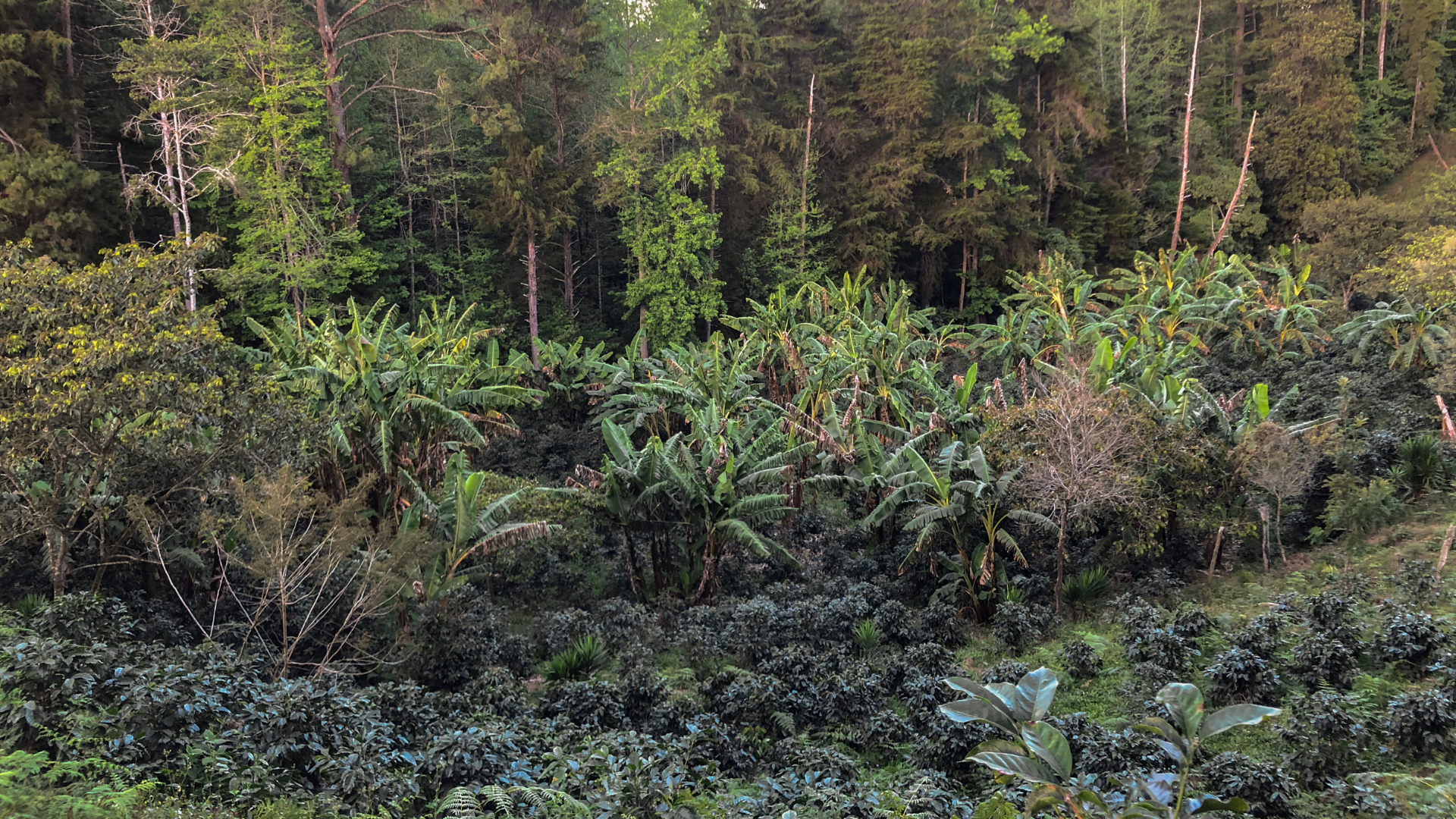Article: A Workshop on Regenerative Coffee Farming

A Workshop on Regenerative Coffee Farming
In October 2024, coffee events, podcasting and consulting agency Map it Forward hosted an online workshop on Regenerative Coffee Farming — a topic that we are very passionate about here at Salt Spring Coffee. This workshop looked at regenerative farming as a potential solution to threats faced by the coffee industry, including climate change, labor shortages and rising production costs. It brought together coffee producers, roasters, café owners, and coffee traders to explore how regenerative farming can — and should — be the way forward for the coffee industry.
But why is regenerative farming so important? As shared in the workshop, if we keep using conventional farming practices without making any changes, we might only have 20-30 coffee harvests left. One of the workshop's speakers, Felipe Croce, a coffee farmer from São Paulo, Brazil, talked about the urgency of changing to more sustainable practices: "What does it mean to drink cup number 1 or cup number 2? What system are you supporting? What we should do is support the farmers that are doing the best to protect our world."
Felipe's farm, Fazenda Ambiental Fortaleza in São Paulo, Brazil has seen the severe impacts of climate change first-hand. "It’s September 25th, and we haven't had rain since April. In all that time, we've just had two small showers, both under 10 millimeters. That’s over 150 days with practically no meaningful rainfall. It’s been extremely hot — over 30 degrees every day, regularly reaching 35 degrees." Felipe said.
Unlike many of the farms in this area, Felipe chose a regenerative approach for his farm to mitigate the growing impact that climate change has on his crops. A key part of this approach has been planting trees in between coffee plants. Trees not only provide shade to the plants below but also help maintain lower temperatures. "We've measured a 5-degree difference in air temperature in the shade compared to the sun. In the soil, it's even a 10-degree difference. This has a huge impact on our coffee plants, they are happier and thriving under the shade canopy.", Felipe shared. Trees also act as windbreakers, helping to prevent the soil from drying out and reducing the spread of diseases carried by the wind. "By simply studying wind patterns and planting trees accordingly, coffee farmers can protect their plants and farm more regeneratively."
Another major benefit of planting trees on coffee farms is their ability to sequester carbon from the atmosphere, helping to slow down climate change, even if only by a small amount. By planting trees, Felipe's farm currently sequesters 30 tons of carbon per hectare per year. This is achieved with just 100 trees per hectare. Soon, he's going to plant around 1,000 trees per hectare, which will allow his farm to sequester 300 tons of CO2 per hectare annually. To put this into perspective, if all coffee farms in Brazil adopted this method, 600 million tons of carbon would get sequestered per year just from coffee farms alone. "On a global level, we emit roughly 35 billion tons of carbon every year. If all coffee farms in Brazil followed this approach, they could sequester between 1.5% and 2% of the reductions needed worldwide to reach Net Zero. All from one country and one crop."
Farmers can also adopt a regenerative approach by supporting biodiversity on their farms. By viewing their coffee farms as ecosystems where plants, animals, insects and microorganisms interact, farmers can cultivate a system of life. In contrast, conventional farming often relies on pesticides and other methods aimed at eliminating anything seen as a competitor to coffee, not taking into account the value of the ecosystem as a whole. Birds, bees, even animals like wolves can have a big impact on the coffee farm ecosystem. "We have six wolves that are now living on our farm, that play a vital role in fertilizing the soil that our coffee plants are growing on." Other methods of regenerative farming include using local fertilizers such as compost and organic manure, and promoting soil life — e.g. by planting cover crops and avoiding fungicides to support interactions between micro- and macroorganisms.
So, back to the question from earlier: What makes a customer choose cup 1 over cup 2? According to Felipe, education is a vital part of changing consumer behavior. "Educate your customers. Education is expensive; it’s the most expensive part of business but there’s really no other way to do it."
At Salt Spring Coffee, we believe that the choices we make, whether as farmers, roasters or customers, matter. Every cup of coffee we drink tells a story about farming practices and a vision for the future of our planet. By choosing regeneratively grown coffee, we're supporting farmers like Felipe, who are passionate about addressing biodiversity loss and climate change with their way of farming. Next time you brew a cup (perhaps of our regenerative organic Village Trade), take a moment to think about the story behind it. Together, we can choose a future where our cups are filled not just with great coffee, but with a commitment to a healthier planet.

